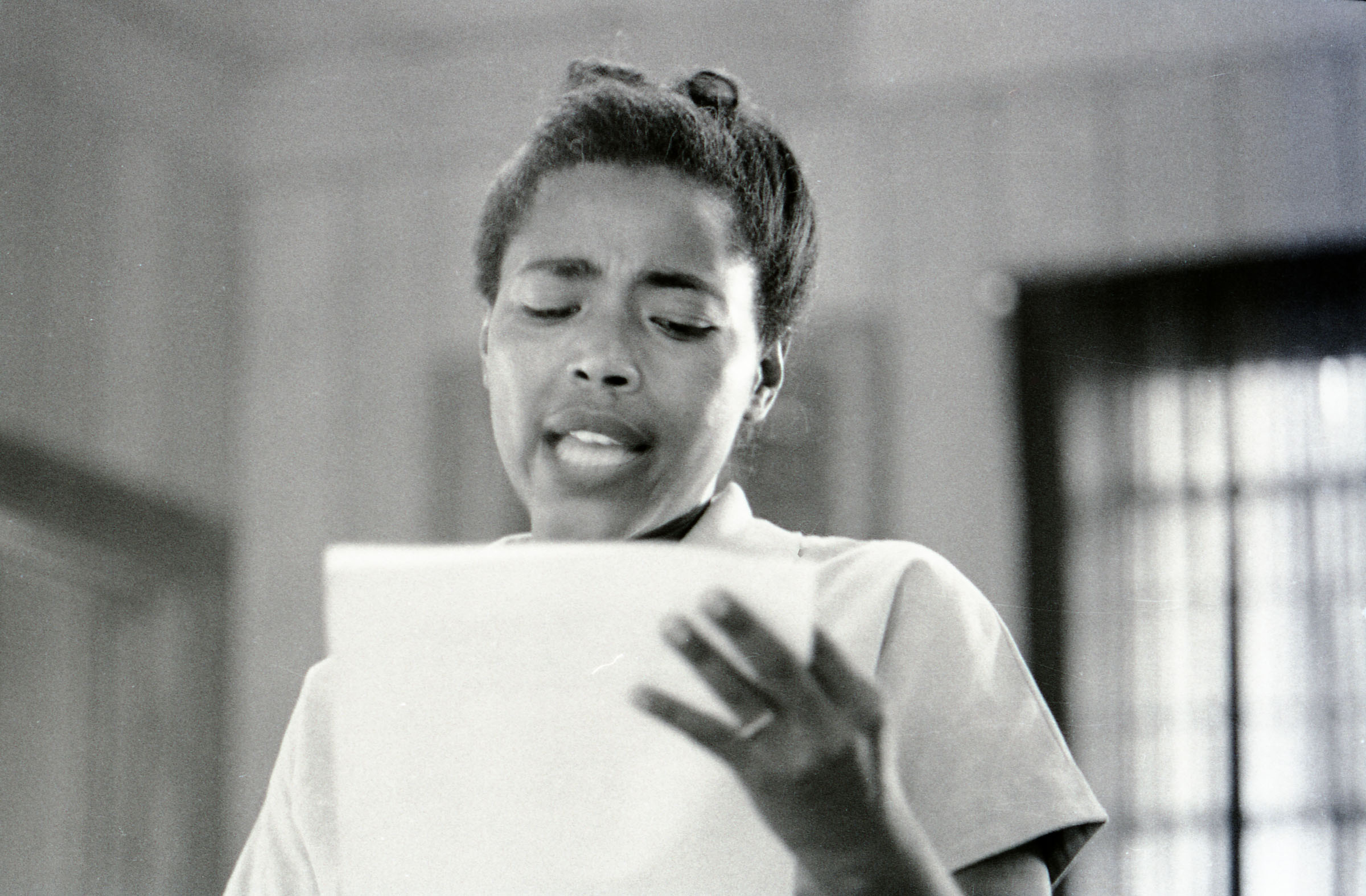Victoria Gray (Adams)
November 5, 1926 – August 12, 2006
Raised in Palmers Crossing, Hattiesburg, Mississippi
Victoria Gray (Adams) said in 1964 that she learned that there were two kinds of people in grassroots politics, “those who are in the Movement and those who have the Movement in them. The Movement is in me…and I know it always will be.”
She acted as a bridge between her community and SNCC organizers. When SNCC’s Curtis Hayes and Hollis Watkins, arrived in Hattiesburg, Mississippi in March of 1962, Victoria “Vicki” Gray was one of the first people to attend the meeting. After trying to register to vote herself, she used her roots in the community to garner support for SNCC’s voter registration efforts. “And I guess it was because of the fact that it was so hard to get people to understand why it was important to go down,” she explained, “that I felt the need to give more and more time, talking to people and trying to get them to understand the importance.”
Ms. Gray’s connections helped her become an effective community organizer. She went to local churches and explained what Watkins and Hayes were doing. She organized a phone tree so that the “SNCC youngsters,” as she affectionately called them, would have at least one hot meal a day. She convinced her minister at St. John’s Methodist Episcopal to open the church up to citizenship education classes. After attending an SCLC training in 1963, Gray began teaching these classes herself, and before long, she became a SNCC field secretary.
Across Mississippi, SNCC’s voter registration efforts ran up against a wall of violent resistance and economic intimidation while the country seemed to pay it no attention. SNCC and local organizers, like Gray, became increasingly disillusioned with Mississippi’s lily-white and segregationist Democratic Party and their claim that Black people didn’t want to vote. So in the fall of 1963, the Council of Federated Organizations–the umbrella organization of civil rights groups operating in the state–organized an “unofficial” voter registration drive called the Freedom Vote. Some 80,000 Black Mississippians participated, and COFO organizers began planning to challenge the legitimacy of the so-called regular Mississippi Democratic Party. In April 1964 the Mississippi Freedom Democratic Party (MFDP) was formed
Gray became one of the leaders of the MFDP – an integrated political party that planned to challenge the all-white Mississippi Democratic Party at the national party’s convention scheduled for August 1964 in Atlantic City. Their goal was to unseat the delegates from Mississippi. “Since the organization of the Freedom Democratic Party, our contention has been that we are the Democratic Party in the state,” Gray explained, “and no matter what more politically sophisticated people may say about it, the truth of the matter is we are the only democratic party in Mississippi, because there is absolutely nothing democratic about the regular Mississippi Democratic Party.” The 1964 challenge was unsuccessful, and the white Mississippi delegates held onto their seats.
Photo of Victoria Gray, congressional candidate of the MFDP, 1964, Mississippi Freedom Democratic Party Records, WHS
Although suffering a crushing blow in Atlantic City, the MFDP pressed on. Ms. Gray ran for Senate on the MFDP ticket, making her the first woman from Mississippi to run for Senate. Along with Fannie Lou Hamer and Annie Devine, Victoria Gray continued challenging the white power structure through her leadership in the MFDP. In 1968, the Mississippi Democratic Party was integrated.
Victoria Gray was among a cohort of ordinary Mississippians who became leaders in SNCC and the Mississippi Movement. Reflecting on her experience in SNCC, Ms. Gray said, “When I met [Ella Baker] and that community of youthful civil rights activists, I realized that this was exactly what I’d been looking for all of my conscious existence…It was like coming home.”
Sources
Victoria Gray Adams, “They Didn’t Know the Power of Women,” Hands on the Freedom Plow: Personal Accounts by Women in SNCC, edited by Faith Holsaert, et al. (Urbana: University of Illinois Press, 2010), 230-240.
Cheryl Lynn Greenburg, ed., A Circle of Trust: Remembering SNCC (New Brunswick: Rutgers University Press, 1998), 73-77.
Interview with Victoria Gray, 1965, KZSU Project South Interviews, Stanford University.
Interview with Victoria Gray Adams by Blackside Inc., November 9, 1985, Eyes on the Prize, Henry Hampton Collection, Washington University.
Victoria Gray Adams, Tape 12, SNCC 40th Anniversary Conference, Shaw University, 2000, SNCC 40th Anniversary Tapes, Duke University Libraries.







